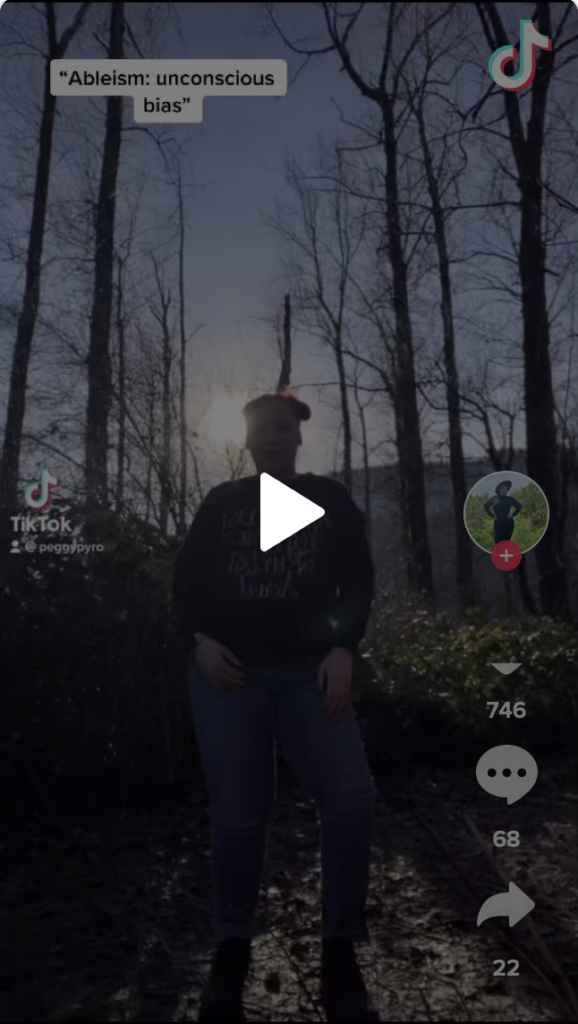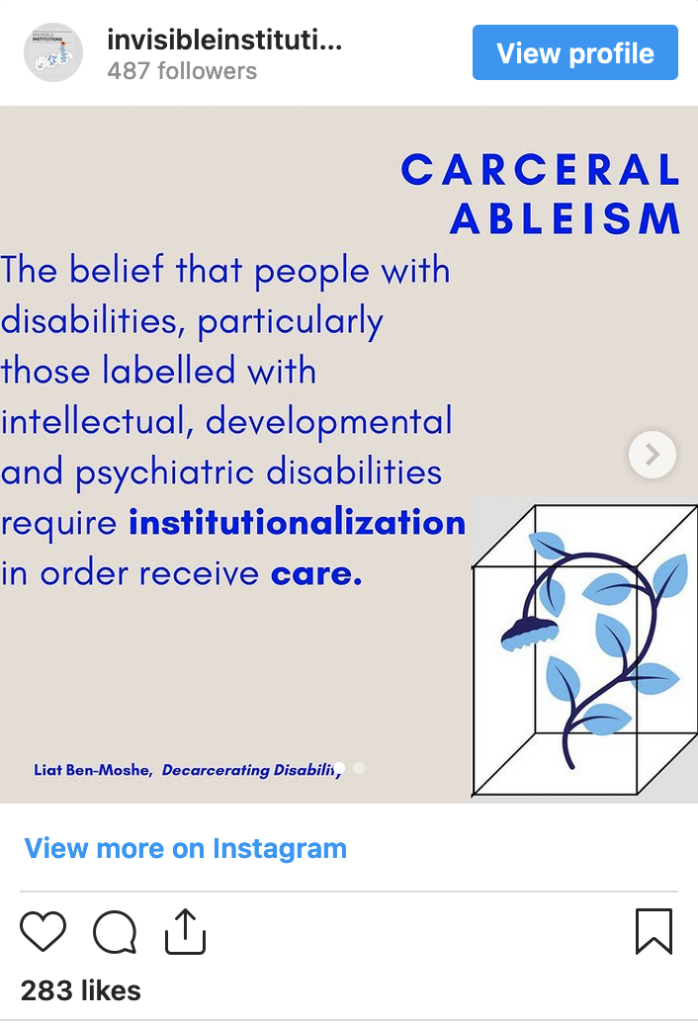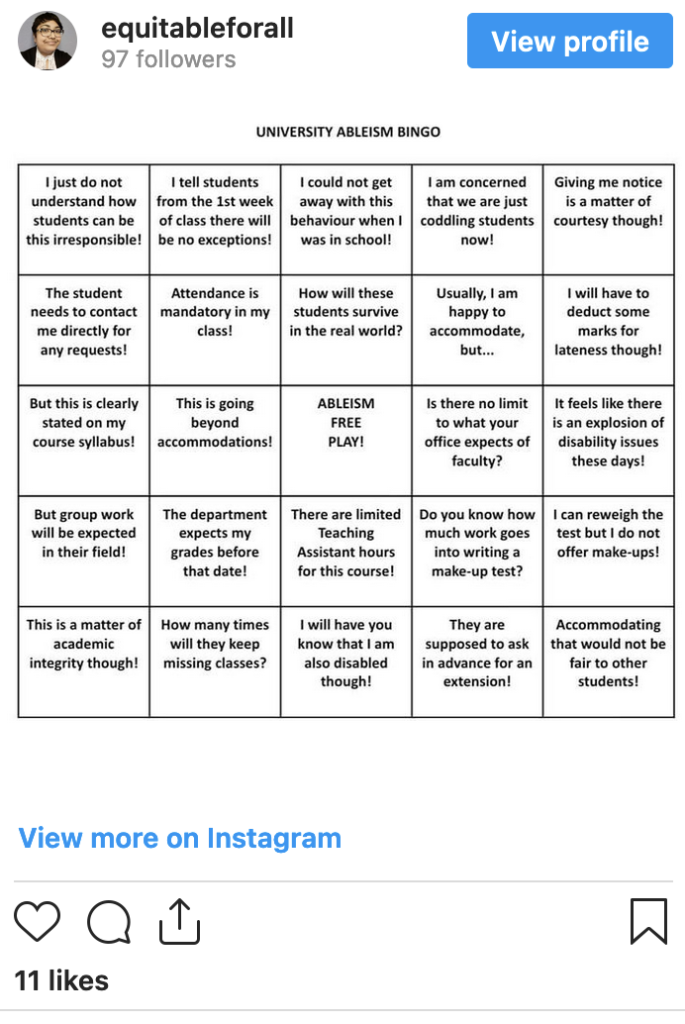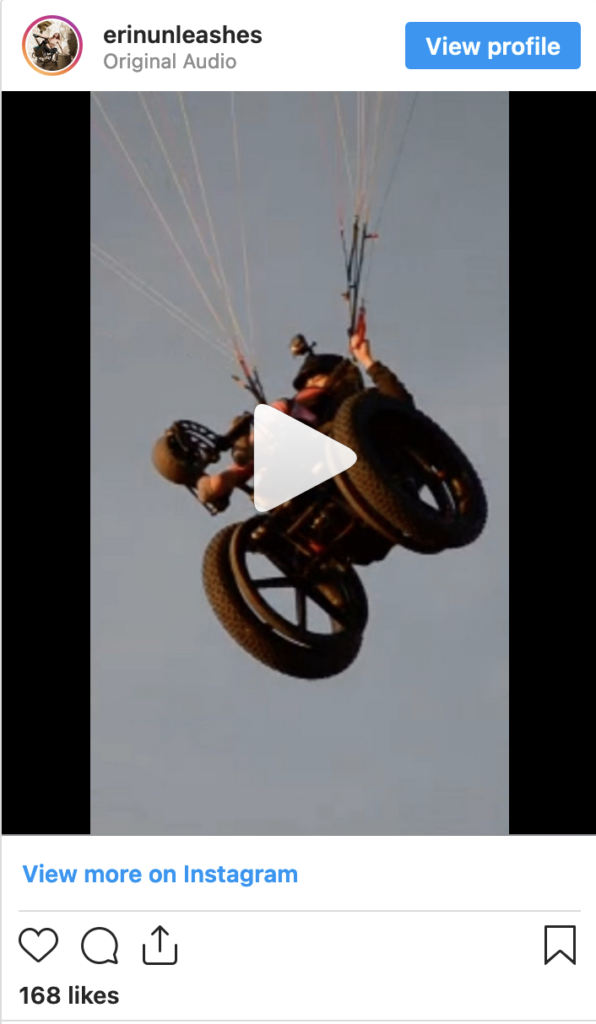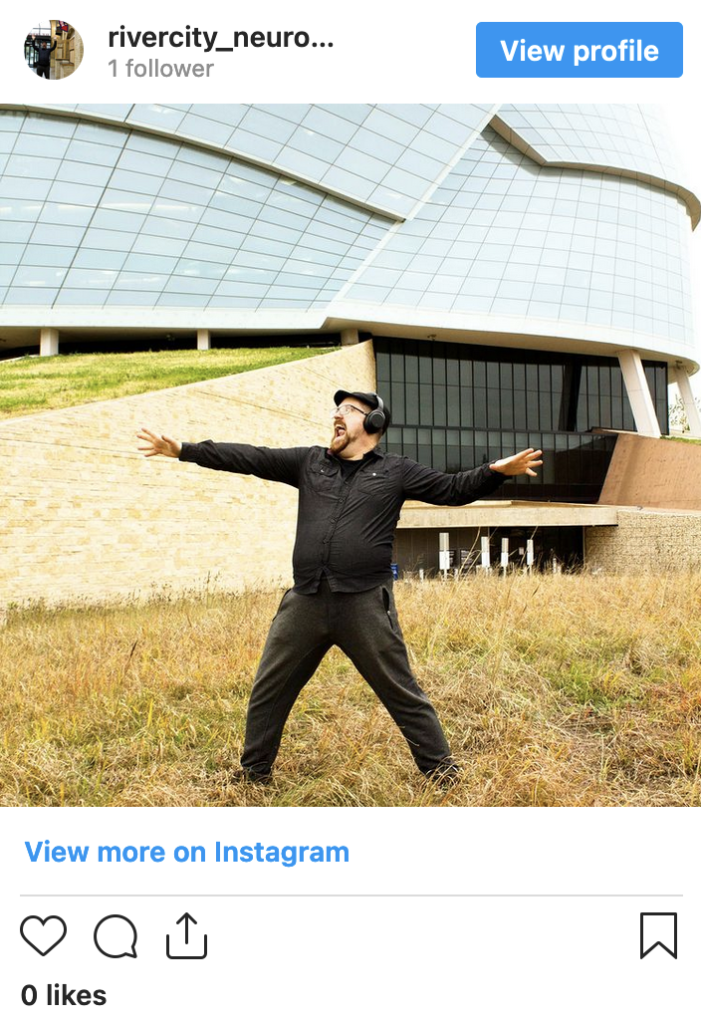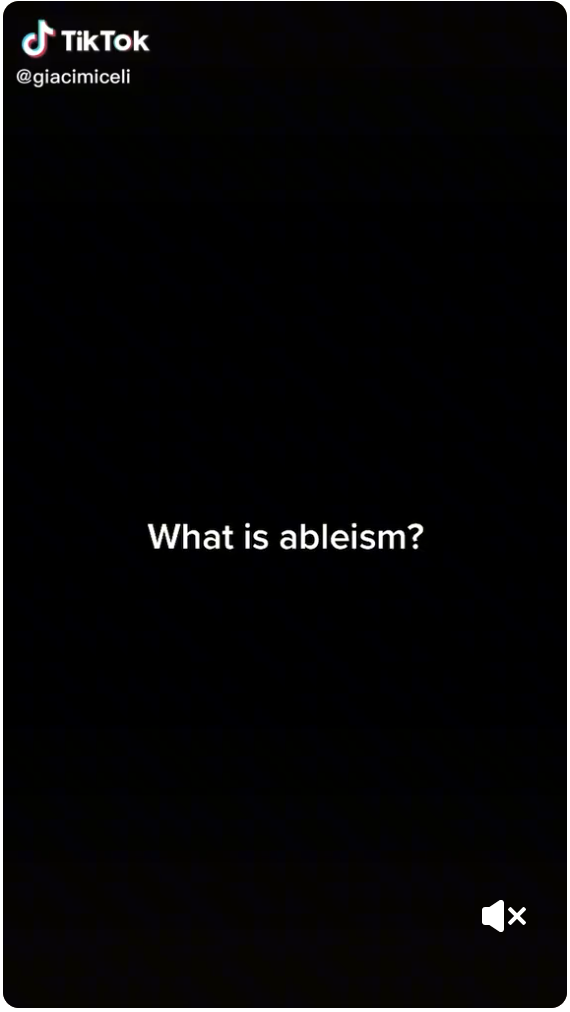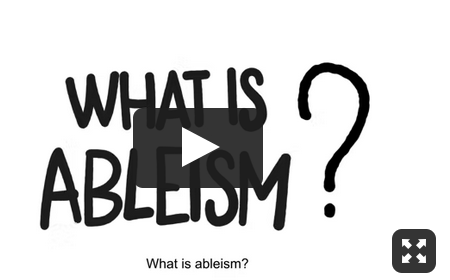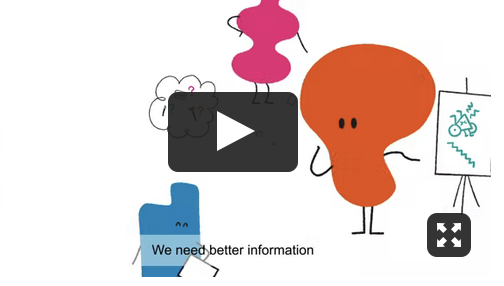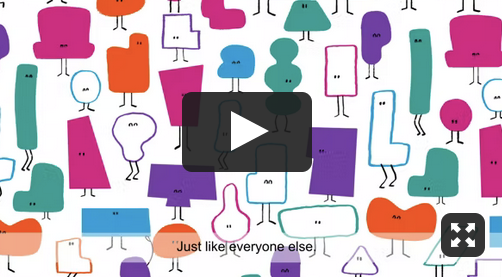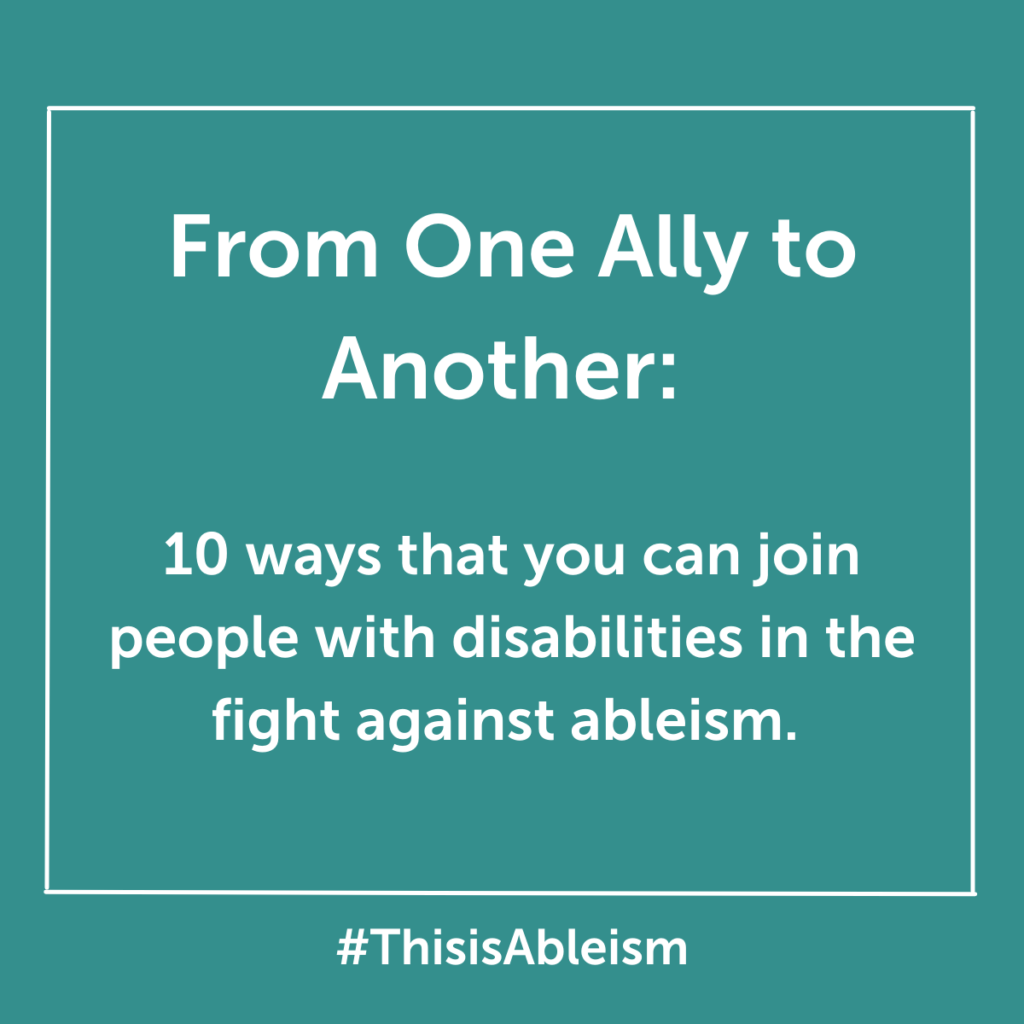Ableism is the belief that it is “normal” to not have a disability and that “normal” is preferred. It’s discrimination on the basis of disability.
This is Ableism is a campaign inspired by Article 8 of the UN Convention on the Rights of Persons with Disabilities and brought to life by people with disabilities in Canada.
We know that #ThisisAbleism:
We asked people with disabilities and their families about ableism and its impact on their lives. These posts were submitted to us.
… and ableism is so much more.
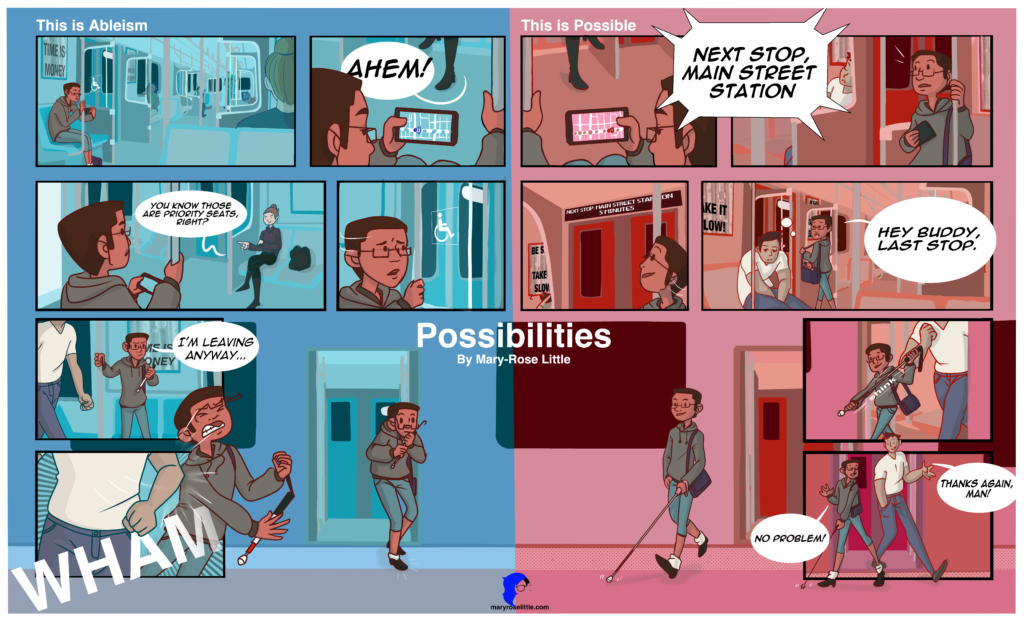
Artist’s Statement:
Possibilities is a two page comic spread written and drawn by Mary-Rose Little, a disabled artist from northern Ontario and practicing out of Toronto. This project was created to raise awareness about ableism in public areas such as hospitals and public transit. Mary-Rose chose to focus on a visually impaired person navigating their way through the public transit system both in the world with ableism and in an idealized version of our own world without it. The comic’s halves mirror each other but show how dignity, basic human rights and respect can change someone’s outlook and attitude. Mary-Rose, the other contributors, and Inclusion Canada hope to talk about these kinds of important, complicated topics in a way that is not only respectful to those experiencing ableism but to also illuminate their struggle and the burden of ableism on disabled people.
How can you take action against ableism in your home, your community, and your workplace?
First, do a deep dive into the rights of persons with disabilities and disability justice.
Begin to envision a radically different, more accessible and inclusive Canada. Back persons with disabilities who are breaking molds, claiming rights, or pursuing justice. Support those who are struggling to meet their basic needs.
Slow down. Question why you’re inspired or, on the flip side, why you feel pity. Listen. Do the work. Challenge yourself to even recognize ableism. Interrupt violence. Respect the inherent dignity of all people.
Here’s more inspiration from the United Nations OHCHR:
Take a look at our blog post for allies: From One Ally to Another – (My thoughts on) how to join people with disabilities in their fight against ableism
Want to get involved in the #ThisisAbleism Campaign?
Consider sending us an email!
We would love to know:
- How does ableism show up in your life?
- Do you have ideas or leads for getting our materials before people working in healthcare and commuter transit?
Use the #ThisIsAbleism hashtag on social media.
“Being excluded from the universe of people who count means occupying a position that [is] always-already constructed by reference to what it [is] not: not white, not a native speaker of English, not married, not male, not able-bodied, not quite our class… [B]eing one of the normal people means being defined by reference to what you already are and so slides easily into the conviction that one’s own position is simply natural and devoid of political meaning.” – Julian B. Carter
“Ableism set the stage for queer and trans people to be institutionalized as mentally disabled; for communities of color to be understood as less capable, smart and intelligent, therefore “naturally” fit for slave labor; for women’s bodies to be used to produce children, when, where and how men needed them; for people with disabilities to be seen as “disposable” in a capitalist and exploitative culture because we are not seen as “productive;” for immigrants to be thought of as a “disease” that we must “cure” because it is “weakening” our country; for violence, cycles of poverty, lack of resources and war to be used as systematic tools to construct disability in communities and entire countries.” – Mia Mingus

This Is Ableism received funding from Allstate Insurance Company of Canada. The views expressed within are solely of the Inclusion Canada, together with project partners where expressly stated. Allstate accepts no responsibility for the views expressed within.

